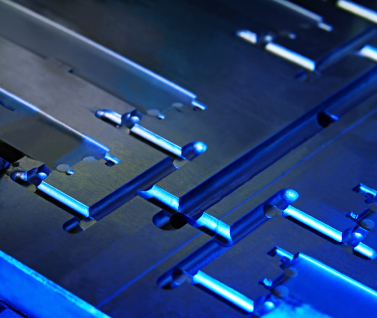PVD coatings for injection moulding tools
Injection molding is the process of heating plastic granules to melting point before injecting them at high pressure through a nozzle into a mould. Once the plastic has cooled, the part can be ejected. Injection moulding is usually used when the parts are too complex or cost prohibitive to machine. Injection moulding produces many parts out of the same mould.
Reduce manufacturing costs
Injection moulds are expensive to produce and injection moulding equipment can be costly to run hence anything that reduces costs must be looked into. The service lives of injection moulds is significantly improved when coated with PVD [relevant-to-adsense type=”start”]thin film coatings[relevant-to-adsense type=”stop”]. This along with shorter cycle times increases productivity and reduces unit costs saves companies money.
Reduce injection mould release force
PVD coatings reduce sticking. This can mean that release agents are completely eliminated.
Offer increased wear resistance
Often highly abrasive melts are used. PVD coated moulds have greater wear resistance and therefore last longer, reducing downtime.
Offer improved injection mould filling
PVD coatings improve mould filling as the melt flows longer. Sink marking is reduced as the injection pressure remains effective for longer.
Improve quality of the injection moulded products
As a result of the improved mould filling, reduced distortion and improved surface finish the parts that are produced with PVD coated injection moulds are of better quality and the rejection rate is reduced.
Easier to clean
The deposits after an injection moulding process are reduced and can be easily removed.
Can be run dry
The injection mould parts are protected against scuffing or seizure without the need for expensive lubricants.

